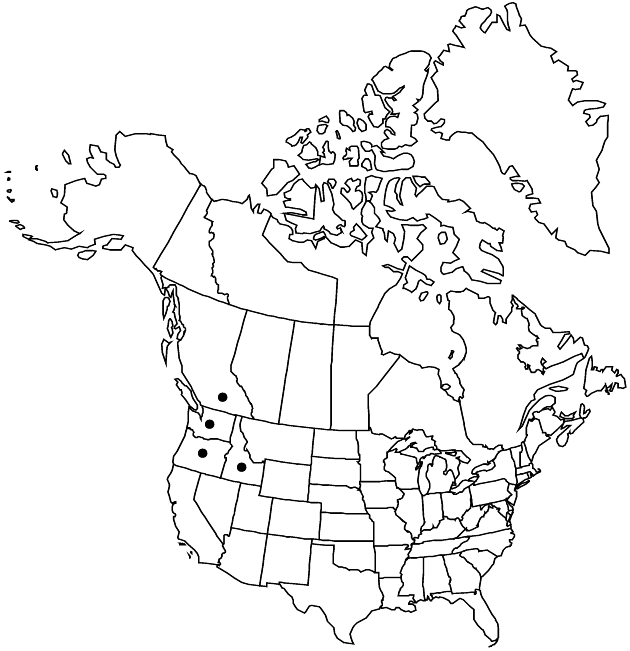Erigeron poliospermus
in A. Gray et al., Syn. Fl. N. Amer. 1(2): 210. 1884.
Perennials, 3–15 cm; taprooted, caudices simple or with relatively short and thick branches. Stems erect, sometimes branched, hirsute (hairs unequal), ± minutely glandular. Leaves mostly basal (persistent; petioles prominently ciliate, hairs spreading, thick-based); blades narrowly oblanceolate to spatulate, (20–) 30–80 × 2–4 (–12) mm, cauline sometimes continuing distally to about midstem, margins entire, usually ciliate, sometimes coarsely so, faces sparsely to densely hirsute, sometimes minutely glandular. Heads 1 (–3) (from branches at or proximal to midstem). Involucres 5–9 × 9–20 mm. Phyllaries in 2–3 series, sparsely to densely hirsuto-villous to hirsute, minutely glandular. Ray-florets 15–45 or 0; corollas usually pink to bluish purple, sometimes white, 5–14 mm, laminae coiling. Disc corollas (3.5–) 4–5.5 mm. Cypselae 2.5–3 mm, 2-nerved, faces densely strigoso-sericeous (obscured); pappi: outer of setae, inner of 20–30 bristles.
Distribution

B.C., Idaho, Oreg., Wash.
Discussion
Varieties 3 (3 in the flora).
Selected References
None.
Lower Taxa
Key
| 1 | Stems branched at or proximal to midstem; basal leaves and branches originating on elongate internodes from proximal 1–6 cm of primary stems; stems and involucres glabrous or sparsely hirsute, densely minutely glandular | Erigeron poliospermus var. cereus |
| 1 | Stems simple; basal leaves and stems originating from compressed nodes at caudex apices; stems and involucres densely hirsute, sparsely minutely glandular | > 2 |
| 2 | Rays 0 | Erigeron poliospermus var. disciformis |
| 2 | Rays 15–45 | Erigeron poliospermus var. poliospermus |
"thick" is not a number.